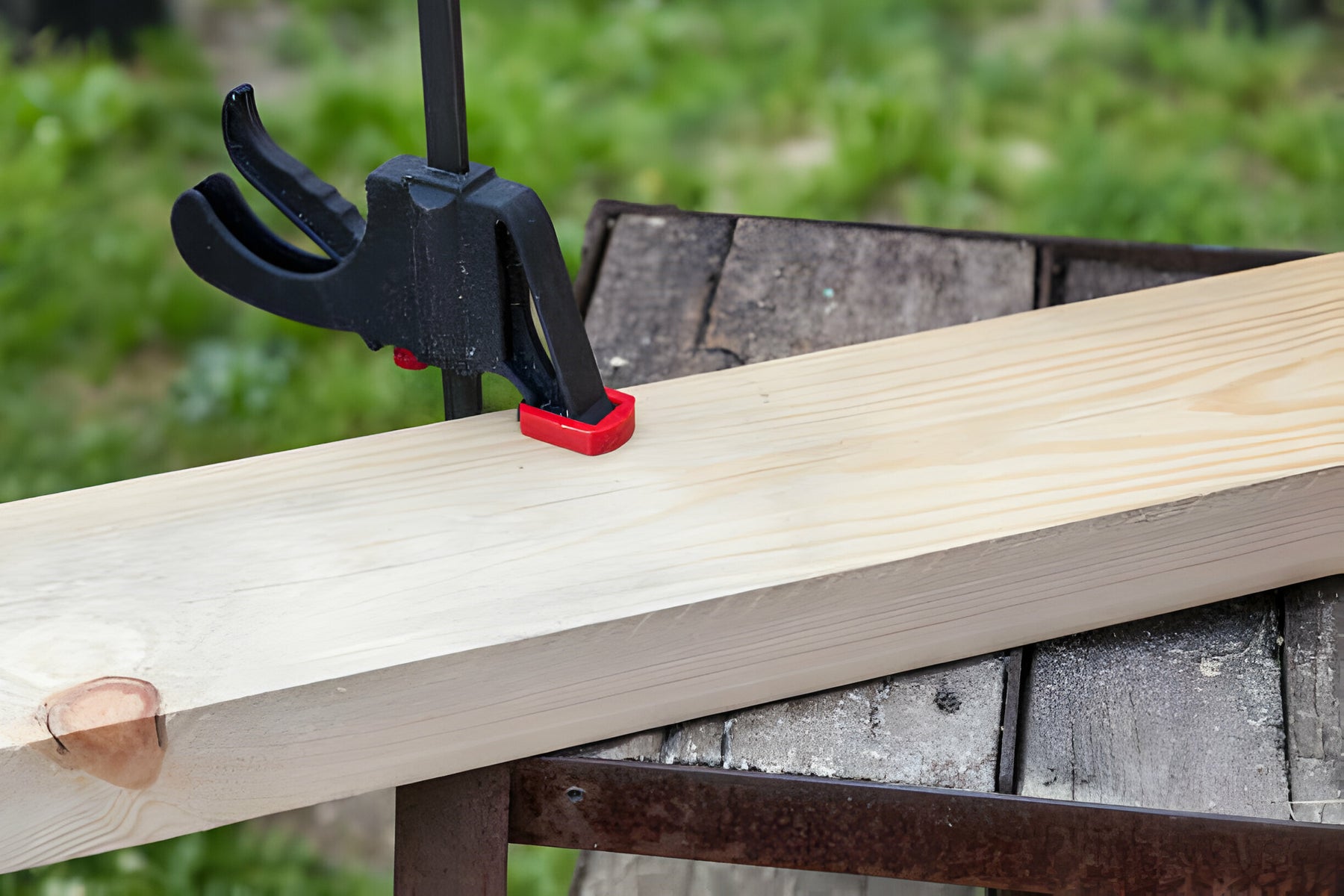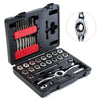
Fixing Common Bar Clamp Problems at Home
Whether used daily or just for occasional tasks, bar clamps see plenty of abuse in workshop environments that can slowly degrade performance over time. Fortunately, many issues that arise have simple DIY solutions extending tool lifespans with just basic mechanical know-how. This comprehensive guide details resolving common bar clamp ailments via affordable household maintenance, avoiding expensive repair shop fees. With hand tools and patience, even heavily used clamps can regain like-new functionality. Understanding basic operation also allows proactively spotting small problems before they worsen. By learning to perform minor surgery themselves, woodworkers and makers maximize tool investments for years to come.
Loose Jaw Plates
Jaw faces that come loose from wear and tear indicate issues that are best addressed early. As the main contact points, plates concentrate stresses and see heavy use over decades. Loose mounting is often first sign of underlying wear, though usually a simple fix. First check tightness of attachment bolts or screws—retightening often fixes movement non-invasively by drawing plates securely to the body. For permanently damaged bodies, aluminum shims make excellent replaceable jaws when secured with longer bolts through pre-drilled holes matching. With solidly mounted replacements, surfaces again apply uniform pressure reliably.
Slippery Jaw Slides
Worn or damaged jaw slides mean uneven clamping pressure compromised. Removing existing pads allows thorough inspection for pitting, corrosion or raised burrs that require careful leveling with a file or fine-grit sandpaper. Lightly sanding the exposed metal surface afterwards prepares it for adhering new nylon or Delrin replacement slides. These durable plastics reduce friction when cut accurately to size. However, severely corroded cast iron bodies may require more work. Repeated applications of a lubricant/protectant like Boeshield T-9 can restore smooth, rust-free surfaces over multiple treatments. Renewed non-stick coating assures easy sliding action.
Stiff Rack Gears
Engagement difficulties arise from unmaintained rack and pinion mechanisms subject to grit intrusion. Complete disassembly permits meticulous cleaning in a non-water based degreaser or solvent to remove accumulated grime. Inspection checks for cracked, worn or missing rack teeth that must be replaced using steel shims for machined precision. Finally, liberally lubricating each calibrated interface or tooth footing with a lightweight machine or clock oil before reassembly leads to buttery smooth movements.
Bent Extension Rods
Mishandled clamps risk permanently deforming telescoping extension rods, compromising their fundamental parallelism. Carefully laying rods on a perfectly flat surface allows close visual inspection with a metal straightedge for any observable bends. Minor distortions may be gently persuadable using a mallet and a hardwood block as an interface to selectively hammer straightened sections back into ideal alignment. However, rods exhibiting more than moderate tweaks typically require replacement since restoring structural integrity becomes impossible, risking future bending under load.
Stripped Slide Screws
Loose, sloppy screws indicate worn or stripped threads no longer achieving a secure grip. Checking first for cross-threading as a potential root cause makes sense. Soft metal degradation permits eased removal by sequentially drilling out remnants with incrementally smaller bits until the hole cleanly dresses a new inner profile to firmly engage a replacement screw. Clearing all debris from the refreshed threads completes the repair.
Collapsed Spreaders
Loss of intended rigidity usually arises from fatigue-induced failures in spreader bars intended to transfer compressive forces smoothly. Close inspection identifies locations of cracks, especially near any welded seams. Marking a center punched layout permits carefully drilling out defective metal. Replacement sections cut from suitable stock like steel angle then get welded concentrically using robust fillet beads. Grinding smooth transitions minimizes future stress concentrations restoring intended functionality.
Corroded Castings
Over many years, unsealed cast iron succumbs to rust or galling from accumulated grime inside moving elements. Complete disassembly allows thorough cleaning with a wire brush, scraping tool or chemical stripper to fully remove flaky remnants. Multiple applications of a protective lubricating paint after degreasing fully seals metal, repelling future oxidation that can lead to binding. Reestablished smooth protective coatings on castings and mechanics translates to renewed dependable service.
Slippery Adjusting Knobs
Knobs controlling settings should lock firmly yet spin freely as desired. Worn or improperly cared for acme threads sometimes introduce slop rendering settings useless. Disassembly permits meticulous cleaning of components along with strategic application of a lightweight machine oil or anti-seize compound where components interface. Reassembling and testing confirms buttery-smooth yet positive locking engagement as intended. Graphite powder retains lubricity while preventing seizure on retaining rings.
Cracked Plastic Parts
Brittle plastic components like Delrin or nylon inserts risk cracking from repetitive metal edge impacts gradually over time. As rare, specialized replacements may be unobtainable, reinforcement represents a practical solution. Careful preparation and applying acetone as cleaner/bonding agent allows cured clear epoxy or super glue fillets to strengthen both crack faces from the inside without compromising profiles. Finishing renders repairs essentially invisible restoring intended function.
Stuck Steel Threads
Without protection, steel threads corrode or gall readily from accumulated filth, trapping components together potentially requiring torch intervention. However, first attempts using a penetrating oil works liberal amounts throughout, agitating intermittently if needed to penetrate lockings. Quenching then cleaning/lubing finishes repairing engagements non-invasively where possible. Preventive lubrication minimizes reliance on more intensive methods long-term.
Bent T-Bar Legs
Subject to bending from careless handling, angled legs connecting clamp bodies to supports require a level foundation. Gentle hammer persuasion may coax out minor distortions, but severe kinks necessitate precisely cut steel pipe sleeve replacements welded or bolted concentrically to damaged sections. Ensuring legs lay completely parallel avoids instability issues under pressure.
Back in Service
Armed with fundamental technical know-how, common bar clamp afflictions prove minor challenges. Basic repairs empower independent self-reliance over frustrating replacements. Extending functional tool service lives justifies minimal investments, deepening appreciation through education. Empowered owners trust clamps completely for any tasks, maximizing value through self-maintenance. Regular evaluation trains diagnostic abilities useful for identifying trouble proactively down the road. With diligence, dependable clamps continue serving makers decades into the future.
Related Article: Identifying Common Bar Clamp Issues
Keep Your Clamps in Stride
In summary, learning diagnosis and simple repairs builds confidence empowering self-sufficiency confronting a wide range of potential problems. Examining clamps periodically catches small issues before requiring extensive surgery. Understanding fundamental mechanics paired with minimal specialized tools permits resurrecting even heavily used clamps to like-new dependability through do-it-yourself preventive care. Staying proactive exercising repair skills ultimately results in tools owners can depend on completely for accurate results on every project for decades of service.



